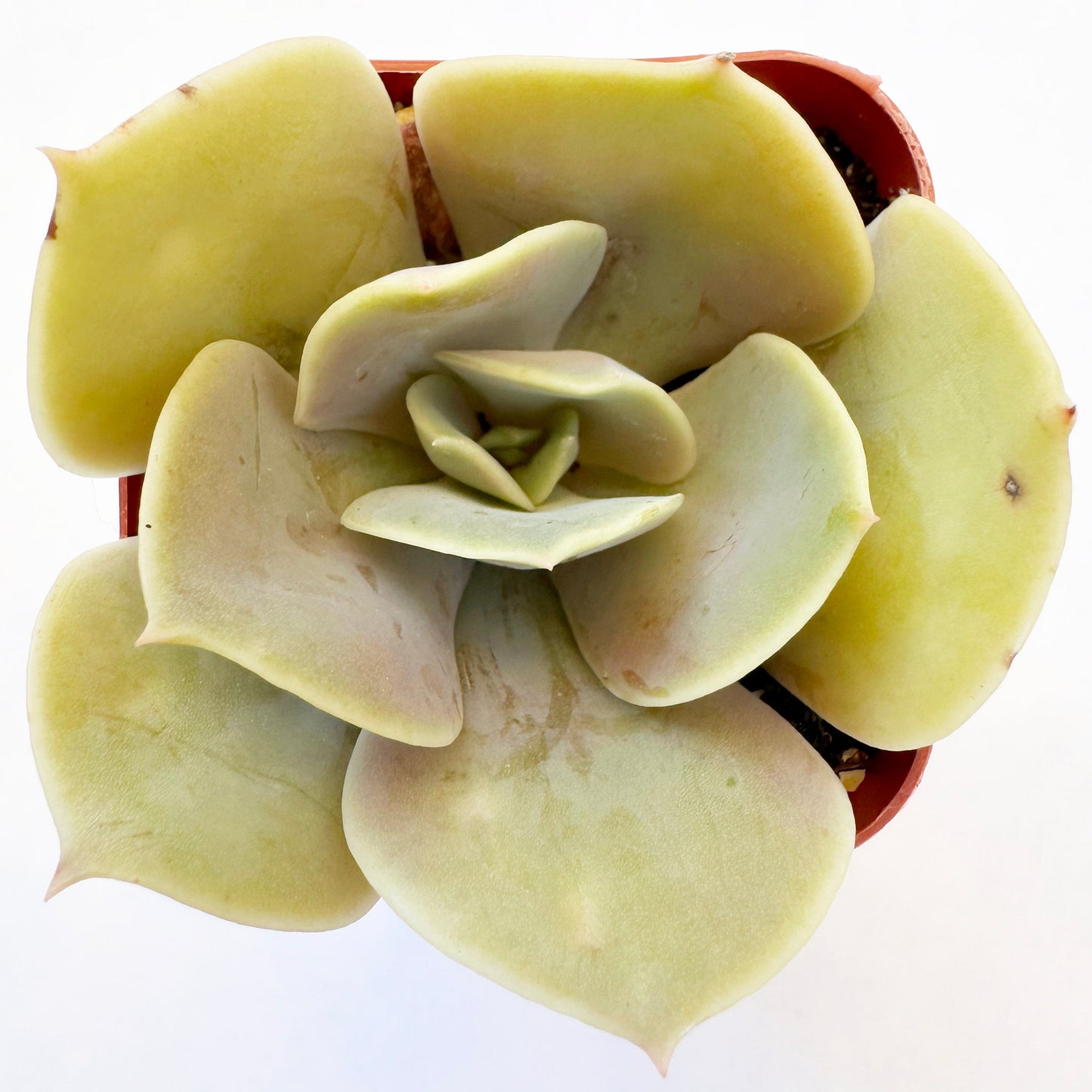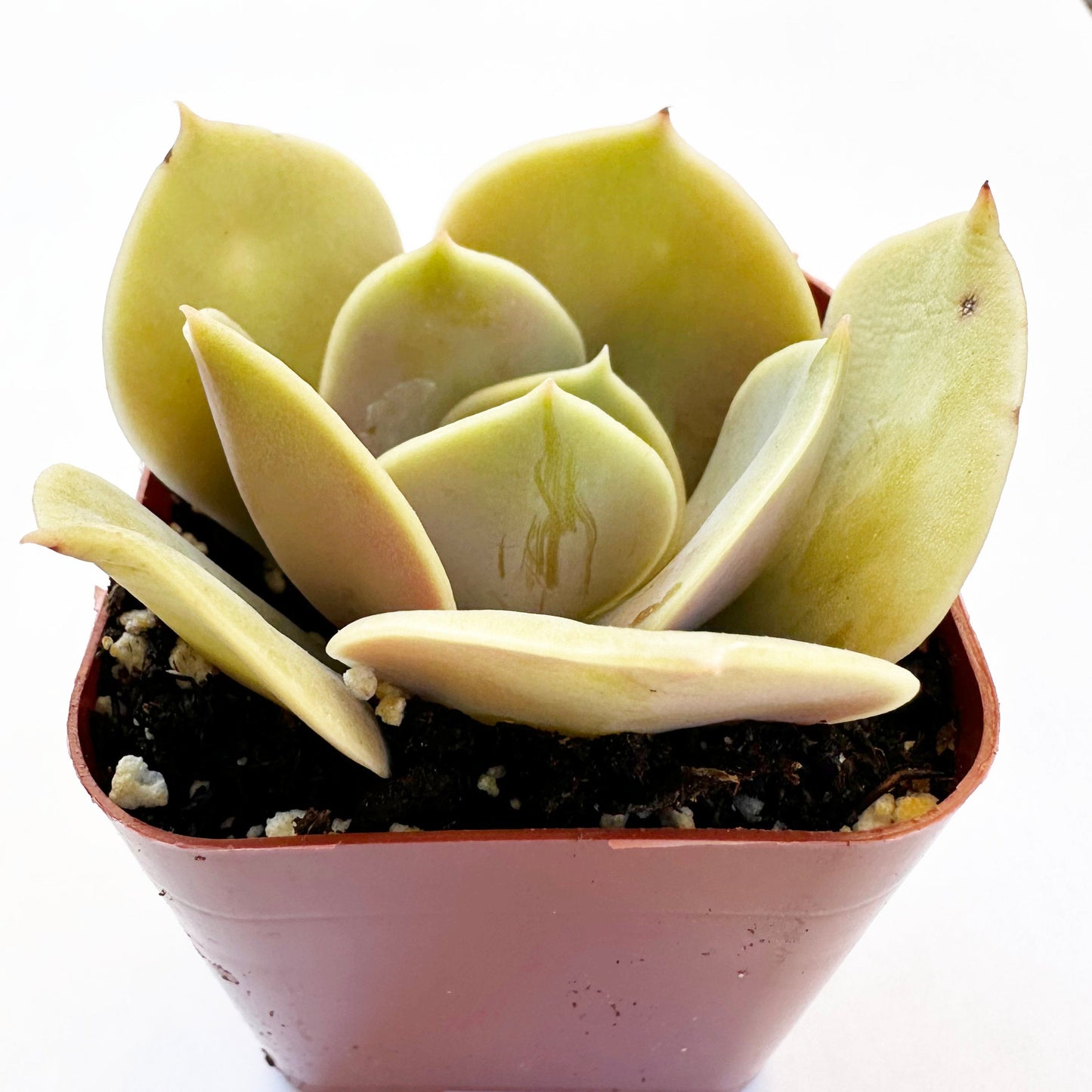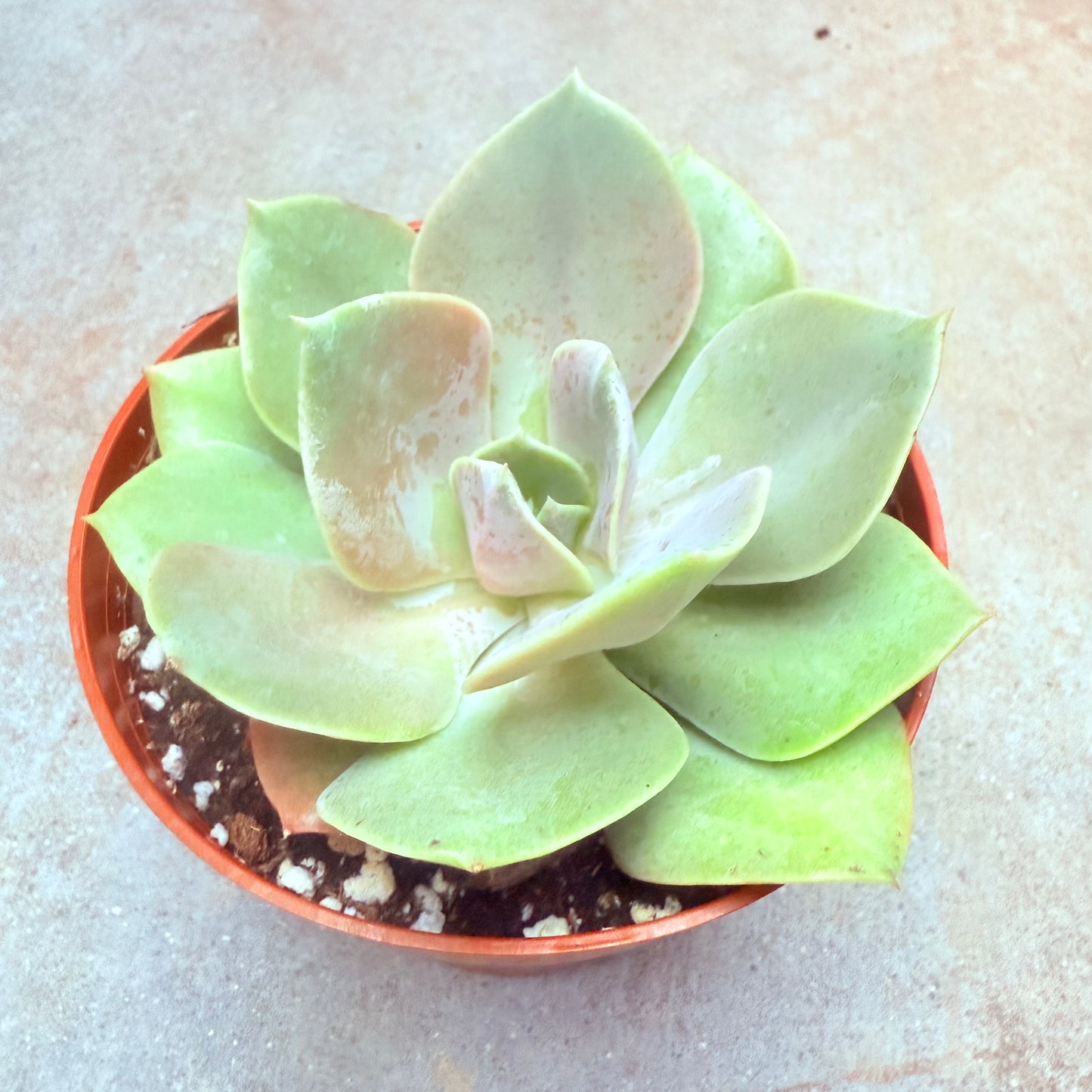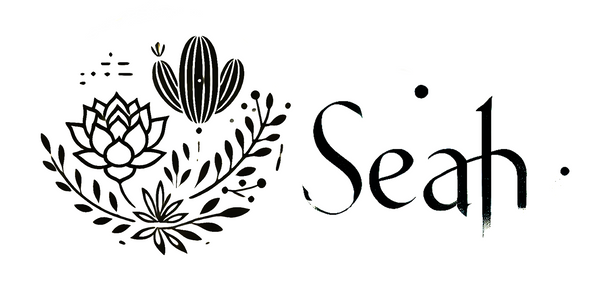1
/
of
4
Seah
Echeveria - Xanthe Rose
Echeveria - Xanthe Rose
Regular price
$2.99 USD
Regular price
$4.99 USD
Sale price
$2.99 USD
Unit price
/
per
In stock
Couldn't load pickup availability
Echeveria 'Xanthe Rose' is a charming succulent plant that's part of the Echeveria genus, widely admired for its aesthetic form and low-maintenance qualities. Here's a detailed description of its morphological characteristics, growth habits, maintenance points, and reproduction methods:
Morphological Characteristics
- Shape and Size: Echeveria 'Xanthe Rose' features a compact rosette shape, typically measuring up to 6 inches (15 cm) in diameter. The rosettes are densely packed with fleshy, spoon-shaped leaves.
- Color and Texture: The leaves of 'Xanthe Rose' are notable for their soft pink to rose-red hues, which can intensify under stress from sun exposure or temperature drops. The leaf surfaces are smooth with a waxy coating that helps retain moisture.
- Flowers: This plant produces bell-shaped flowers on tall, slender stalks that emerge from the rosette center during the spring and early summer. The flowers are usually orange or yellow, adding a striking contrast to the leaf color.
Growth Habits
- Light Requirements: Prefers full to partial sunlight. In very hot climates, afternoon shade is beneficial to prevent sunburn.
- Temperature Tolerance: It thrives in a temperate range of 60°F to 80°F (15°C to 26°C). While it can tolerate mild frost for short periods, prolonged exposure to temperatures below freezing can damage the plant.
- Growth Rate: Grows moderately fast in suitable conditions and tends to fill its space with offsets that form around the mother plant.
Maintenance Points
- Watering: Water sparingly, allowing the soil to dry out completely between watering sessions. Overwatering can lead to root rot, particularly in cooler or shaded conditions.
- Soil: Requires well-draining soil, typically a mix designed for cacti and succulents. Adding coarse sand or perlite improves drainage.
- Fertilization: Feed with a diluted low-nitrogen succulent fertilizer during the growing season (spring and summer) to encourage growth and flowering but avoid over-fertilization.
Reproduction Method
- Offsets: The most common method of propagation for Echeveria 'Xanthe Rose' is through offsets, or "pups," which naturally grow from the base of the mother plant. These can be gently removed and replanted once they have a few roots.
- Leaf Cuttings: Leaves can be gently twisted off the rosette and placed on top of soil where they will eventually root and form new plants. This process requires patience as it can take several weeks for new growth to appear.
- Seeds: While not the most efficient method, Echeveria 'Xanthe Rose' can also be grown from seeds. However, this method is less commonly used due to the slower growth rate and higher level of care required.
Caring for Echeveria 'Xanthe Rose' involves balancing the right amount of light, water, and temperature, making it an ideal choice for both novice and experienced succulent enthusiasts seeking a visually striking addition to their collection.








